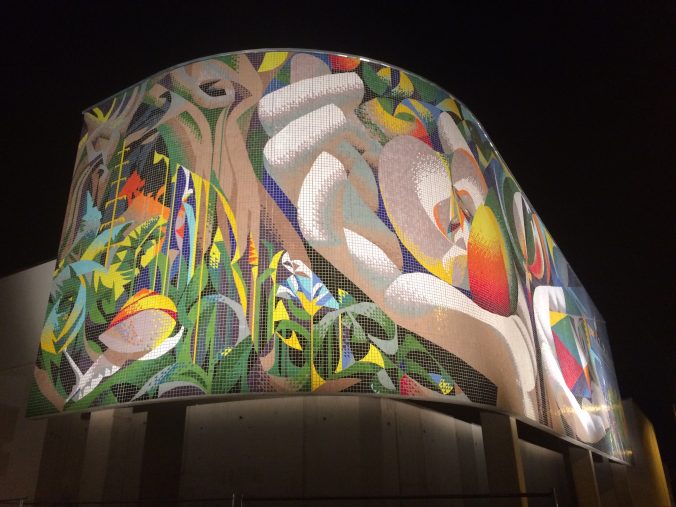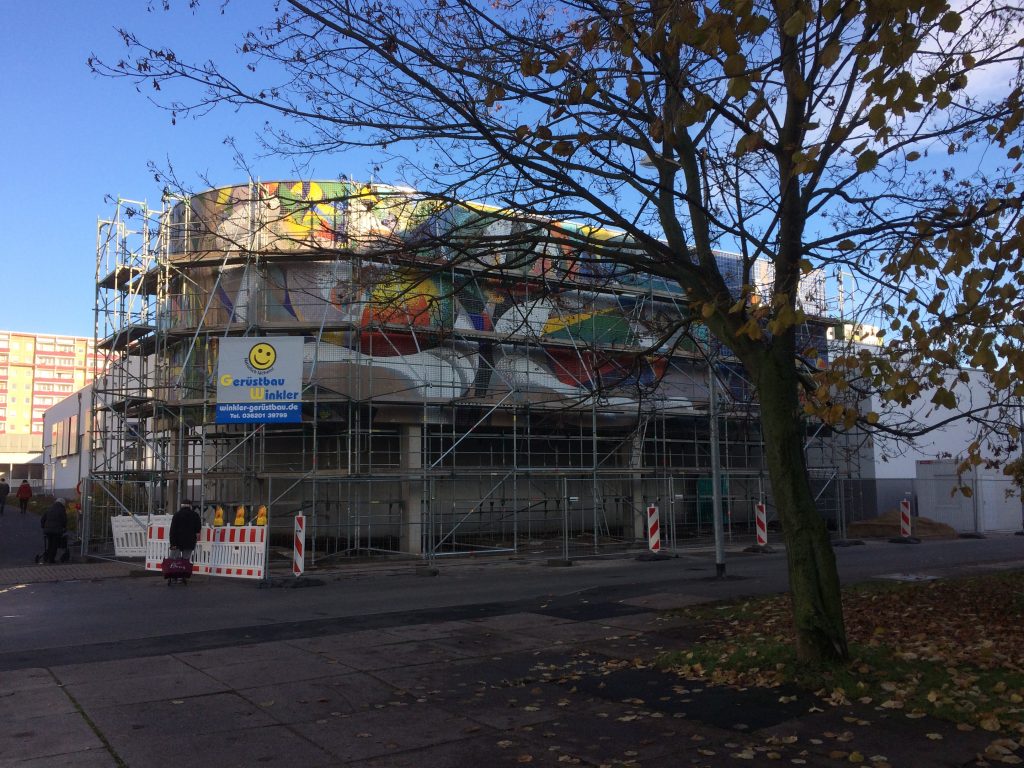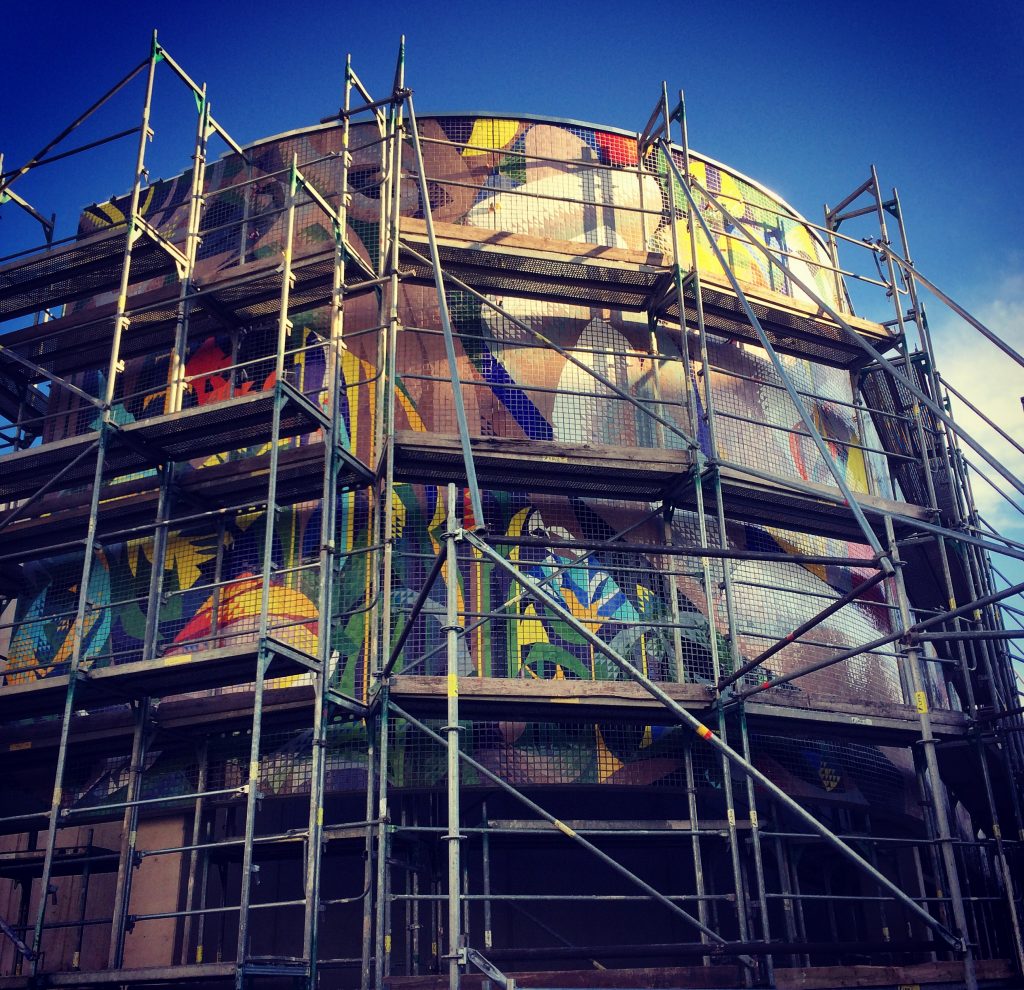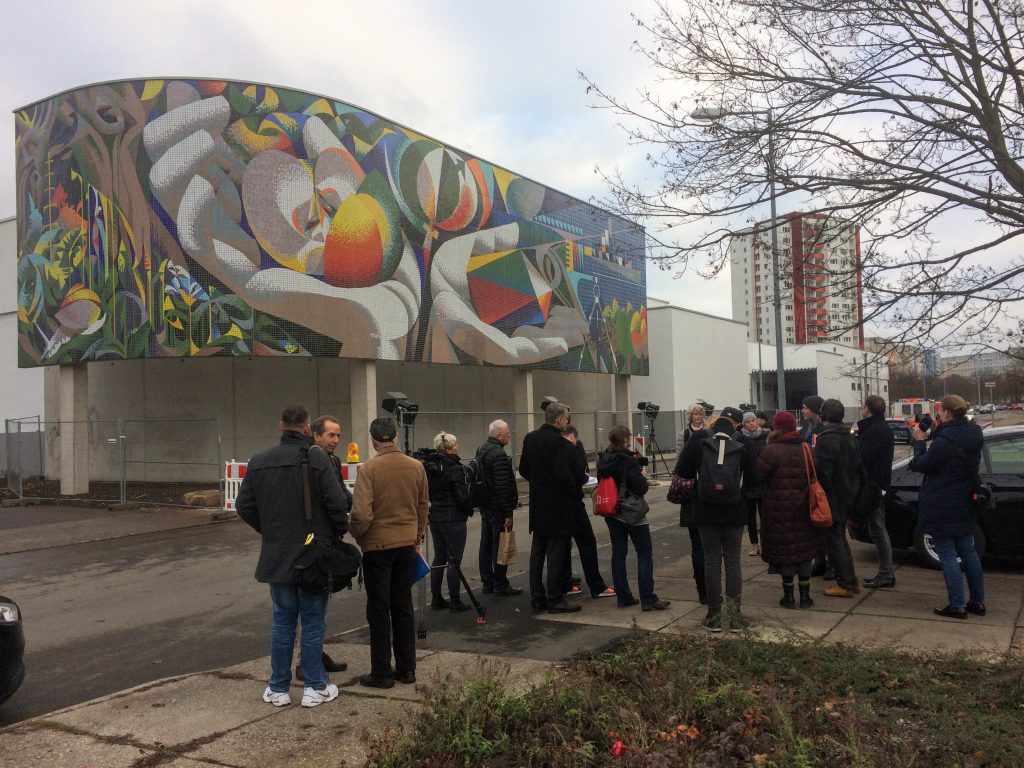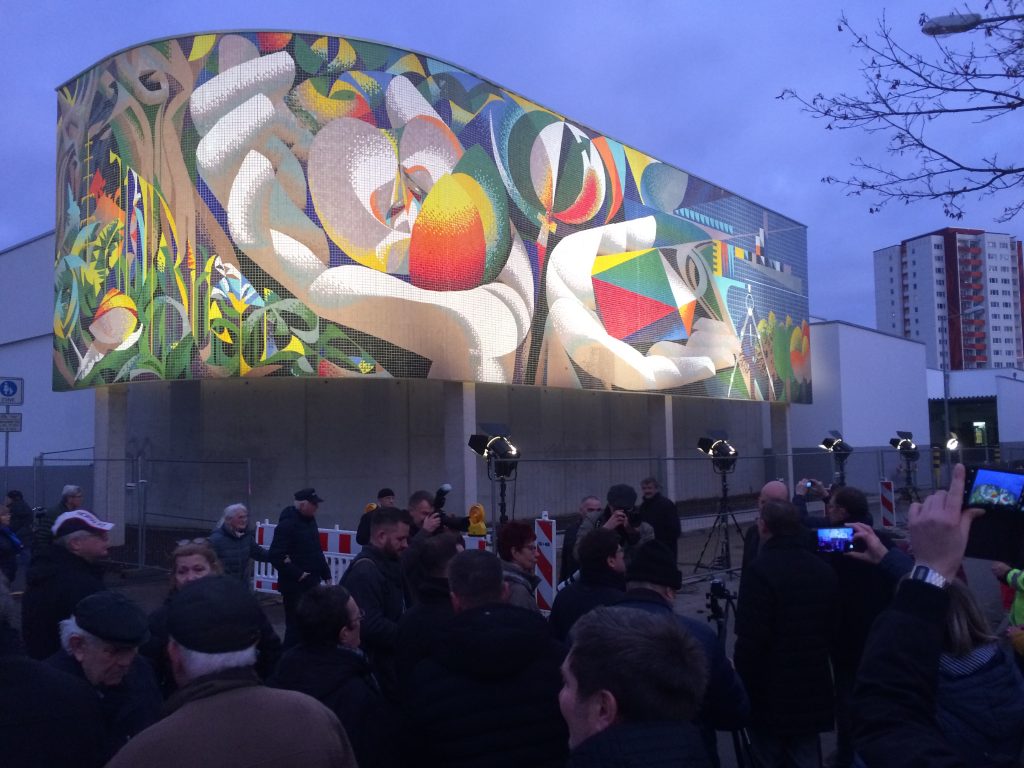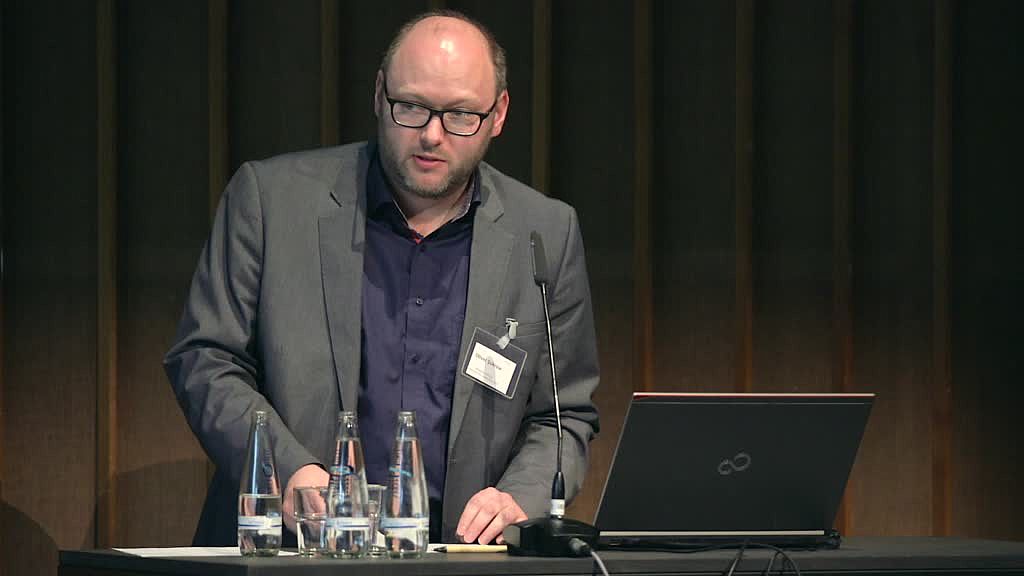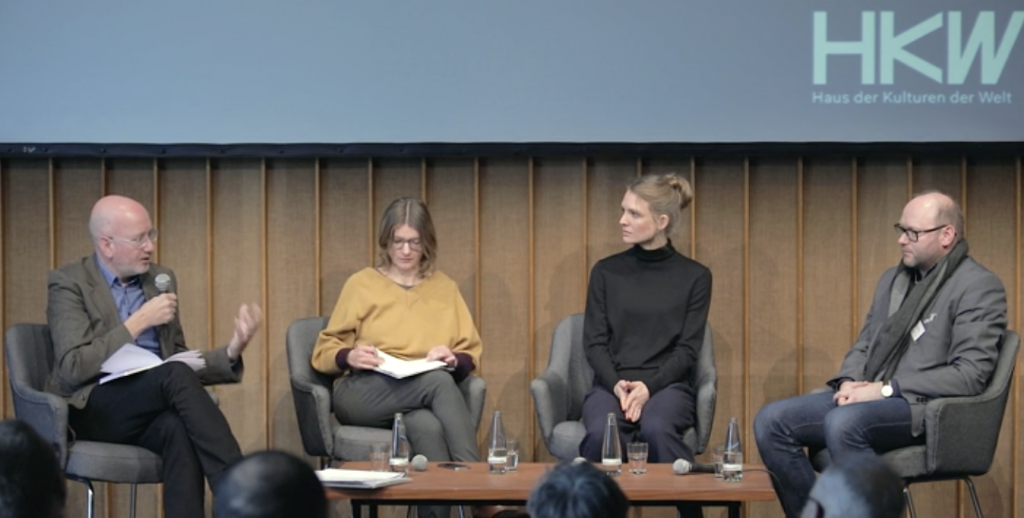Last public artwork of the Spanish emigré restored
Josep Renau’s (1907-82) 30 x 6 meters large mural Man in Relation to Nature and Technology (1982-84) that was originally placed on the northwestern corner of the »Kultur- und Freizeitzentrum« at the residential area »Moskauer Platz« in Erfurt/Germany, has been presented to the public again after it was restored by the Wüstenrot Stiftung and the City of Erfurt between 2014-19.
This artwork is Renau’s last public commission in the GDR and was finished after his death by his workshop. After the building was torn down in 2009, the future of the mural was uncertain. However, thanks to a group of Renau’s pupil and local residents‘ initiatives, the mural could have been restored eventually. Being involved in the project of the Wüstenrot Foundation since 2017, I did archival research in Berlin, Valencia, and Erfurt. My edited book on the history of the mural and its restoration will be published in 2020.
The project website at the Wüstenrot Foundation: https://wuestenrot-stiftung.de/mosaik-josep-renau-erfurt/
Article in The Art Newspaper by Catherine Hickey on mural and context: https://www.theartnewspaper.com/news/renau-mosaic-sees-light-of-day-again
A feature by Deutschlandfunk that was produced during the mural’s inauguration in December 2019: https://www.deutschlandfunkkultur.de/restauriertes-wandmosaik-in-erfurt-ein-stueck-ddr.1013.de.html?dram:article_id=464958
